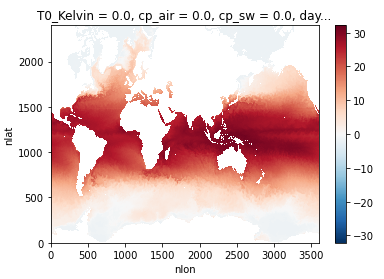To me it makes sense that this discontinuity would appear when using the "REGULAR" filters which don't account for the spatially variable grid cell geometry. However, I am troubled that TRIPOLAR_POP_WITH_LAND also produces the same discontinuity. Are you sure about that?

What happened: A seam (unphysical line in the ocean) appears in my filtered field after applying a Laplacian to the POP data. The seam appears to come from the
areainput coordinate (see below).What you expected to happen: I do not expect this seam to appear, just as it does not appear in the original (unfiltered) data. I expect
GCM-filtersto be able to handle the grid seam such that it does not show up in the final filtered field .Minimal Complete Verifiable Example (MCVE):
The above code yields the following figure of the filtered SST field:
It's not immediately apparent when viewing the entire dataset, but if we zoom into the problem latitude, the seam is apparent:
The seam likely arises due to the grid of this POP dataset, which can be seen in the
areainput coordinate:Anything else we need to know?:
I have also had the same behavior running other Laplacians:
TRIPOLAR_POP_WITH_LANDandREGULAR_WITH_LAND_AREA_WEIGHTED.GCM-Filters version and environment: